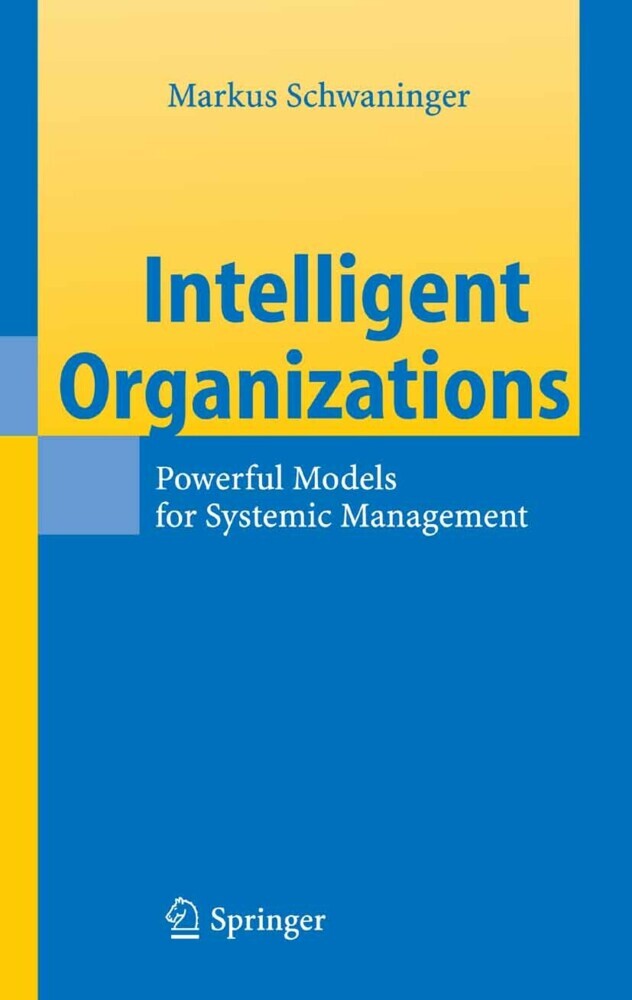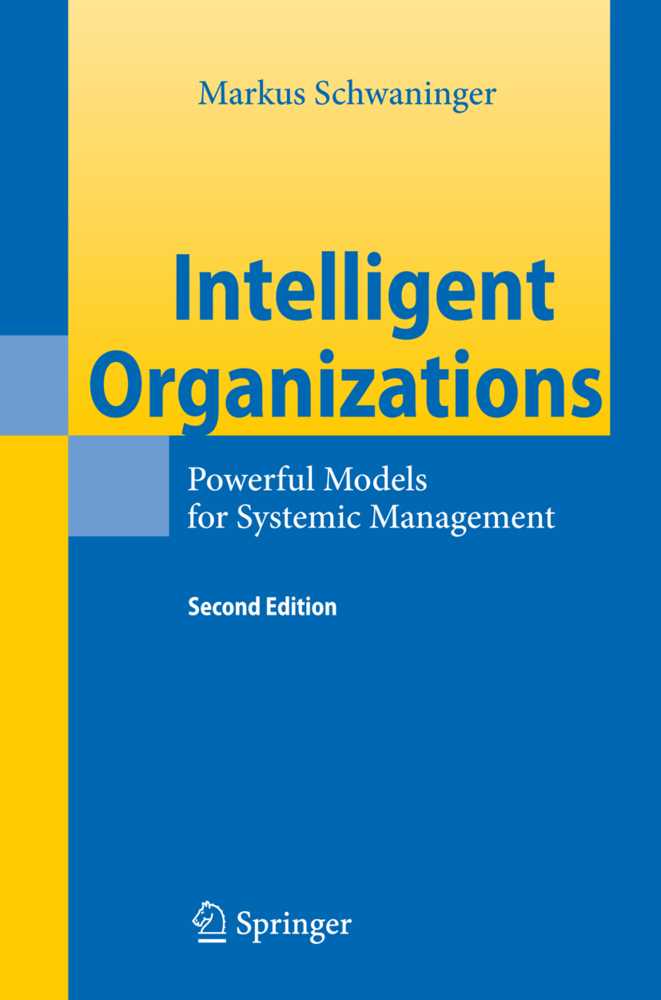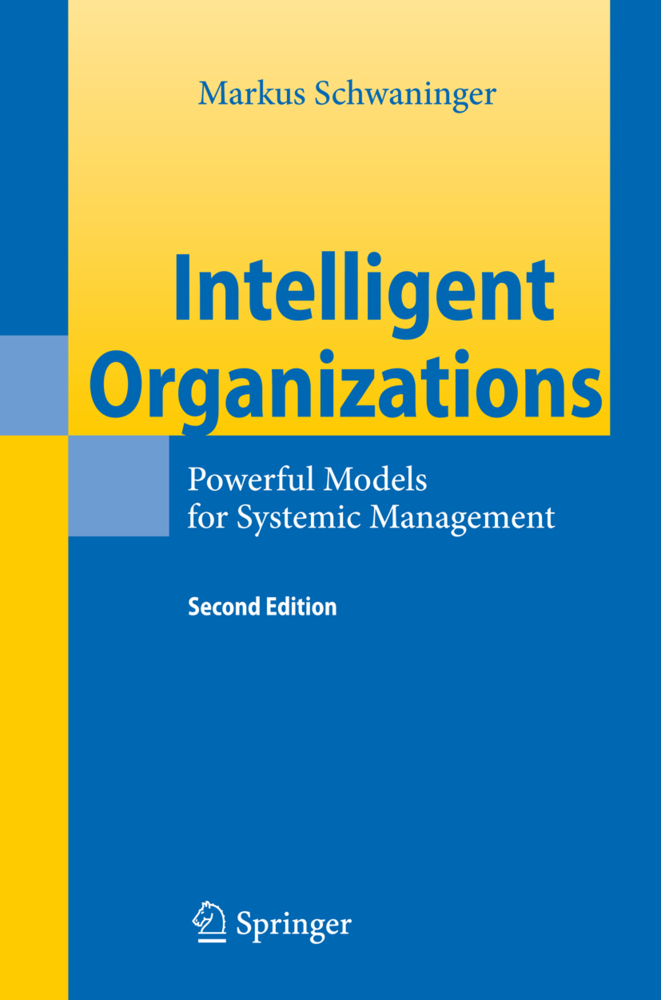Intelligent Organizations
Powerful Models for Systemic Management
This book offers an innovative approach to overcome the crisis of management in the face of complexity. The systems approach to management will help to develop the new kind of intelligent organizations so urgently needed. This approach is a powerful tool, grounded in organizational cybernetics and systems dynamics. The approach will allow managers and advanced students of management cope with organizational complexity in an effective way. The book is a source for improvement of any kind of organizations, private or public, non-profit, large or small. The systems approach, on which this book is grounded, makes this book different from many conventional books on organizations.
1;Preface;5 2;Table of Contents;9 3;Chapter 1 Organizational Intelligence in Systemic Terms;12 3.1;1.1 The Need for Organizational Innovation;12 3.2;1.2 An Innovative View of Organizations;13 3.3;1.3 Related Streams of Inquiry;17 3.4;1.4 What Makes an Organization Intelligent?;18 3.5;1.5 Purpose and Scope of this Book;19 4;Chapter 2 Complexity and Understanding;21 4.1;2.1 Two Crucial Concepts: Complexity and Variety;21 4.2;2.2 Ashby's Law of Requisite Variety;24 4.3;2.3 The Conant-Ashby-Theorem: Models are Crucial;29 5;Chapter 3 Management - A Distributed Function;32 5.1;3.1 On Leadership and Management;32 5.2;3.2 On Control Loops;34 5.3;3.3 Control versus Pre-control;37 5.4;3.4 Extrinsic versus Intrinsic Control;37 5.5;3.5 Hierarchy versus Heterarchy;39 5.6;3.6 Distributed Management;41 6;Chapter 4 Intelligent Organization - A Systemic Framework;43 6.1;4.1 Postulates;43 6.2;4.2 Introducing the Framework;45 6.3;4.3 Dimensions of the Framework;47 6.4;4.4 Theoretical Models to Enhance Organizational Intelligence;50 6.5;4.5 Relationships between the Models;52 7;Chapter 5 Activities: What the Organization Does;54 7.1;5.1 The Model of Systemic Control (MSC);55 7.2;5.2 Operative Level;58 7.3;5.3 Strategic Level;60 7.4;5.4 The Normative Level;71 7.5;5.5 Relationships between the three Levels;75 7.6;5.6 Criteria of Systemic Effectiveness;76 7.7;5.7 Revisiting the Feedback Cycle;78 7.8;5.8 An Application Perspective;80 7.9;5.9 Intermediate Summary and Outlook;83 8;Chapter 6 Structure - Preconditions for Effective Action;87 8.1;6.1 The Viable System Model (VSM);87 8.2;6.2 On Recursive Organization Design;91 8.3;6.3 Recursion and Heterarchy;93 8.4;6.4 Embodiments of Recursive Management;95 8.5;6.5 Virtual Organizations as Viable Systems;98 8.6;6.6 Networks as Viable Systems;101 8.7;6.7 Networks of Viable Systems;104 8.8;6.8 Viable Systems: Hierarchy, Heterarchy or Both?;106 8.9;6.9 Criticisms and Beyond;108 8.10;6.10 Autonomous Agents in Viable Organizations;109 8.11;6.11 An Application Perspective;111 8.12;6.12 Intermediate Summary and Outlook;113 9;Chapter 7 Behavior - The Control of Cognition and Emotion;116 9.1;7.1 Behavior In and Of Organizations;117 9.2;7.2 Participation and Authority - Social Behavior for Complexity Absorption;121 9.3;7.3 The Team Syntegrity Model (TSM);122 9.4;7.4 The Team Syntegrity Process;126 9.5;7.5 Applications;127 9.6;7.6 Case Study: A Collaborative Global Research Project;128 9.7;7.7 Further Empirical Evidence;135 9.8;7.8 Outlook;138 10;Chapter 8 Ethos and Identity: Basic Parameters of Organizations;140 10.1;8.1 Organizational Ethos;142 10.2;8.2 Organizational Identity;154 10.3;8.3 Theory of the Firm;157 10.4;8.4 Some Empirical Evidence;160 10.5;8.5 Immoral Organizations;165 10.6;8.6 More Empirical Evidence;167 10.7;8.7 Immoral Actors in Organizations;170 10.8;8.8 Intermediate Summary and Outlook;171 11;Chapter 9 Time and Organizational Dynamics;175 11.1;9.1 Transformation over Time;176 11.2;9.2 A Practical Example;177 11.3;9.3 Lessons from Computer Simulations;179 11.4;9.4 Intermediate Summary;187 12;Chapter 10 The Framework Revisited;189 12.1;10.1 Systemic Features;190 12.2;10.2 Organizational Principles in the Framework;191 12.3;10.3 An Integrative View of the Dimensions and Models;193 12.4;10.4 Change and the Fundamental Parameters Revisited;198 12.5;10.5 Applications of the Framework;201 12.6;10.6 Relevant Empirical Work by Other Authors;209 12.7;10.7 Intermediate Summary and Outlook;210 13;Chapter 11 Outlook: The Way Ahead;213 14;Appendix;217 15;References;220 16;Index;239
Schwaninger, Markus
| ISBN | 9783540298779 |
|---|---|
| Artikelnummer | 9783540298779 |
| Medientyp | E-Book - PDF |
| Auflage | 2. Aufl. |
| Copyrightjahr | 2006 |
| Verlag | Springer-Verlag |
| Umfang | 240 Seiten |
| Sprache | Englisch |
| Kopierschutz | Digitales Wasserzeichen |











